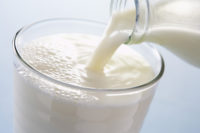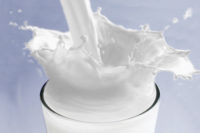Back to school
Cheese, yogurt, butter prices are on the rise; ice cream, milk show declines
As students head back to school, cheese sellers expect 'sharp increases' in demand; milk processors see increased activity.

The following is from the USDA's Dairy Market News for the week of Aug. 5 to 9. Read the complete 24-page report here.
Cheese shreds in 8-ounce packs were the most featured individual item this period, appearing in 12,755 ad features. The national price averaged $2.36, up 12 cents from two weeks ago. 8-ounce blocks, at $2.43, moved 7 cents higher from two weeks ago.
Greek yogurt in 4-6 ounce packs, featured in nearly 11,000 ads, and averaged $1.00, up 1 cent from both two weeks ago and a year ago. Regular yogurt in 4-6 ounce packs averaged 51 cents, up 1 cent from two weeks ago.
The national weighted average butter price registered $2.91 for 1# packages, a 38 cent increase from two weeks ago and 32 cents higher than a year ago.
Ice cream features are down this period, appearing in 11,387 ads, down near 11% from two weeks ago. The national average for 48-64 oz. containers was $2.89, down 5 cents from two weeks ago and 23 cents lower than a year ago.
The national weighted average conventional milk price for half gallons, $1.87, 13 cents lower from two weeks ago. Organic half-gallon milk, at $3.64, is 28 cents higher from two weeks ago. The organic-conventional half-gallon price spread is $1.77, compared to $1.36 two weeks ago.
Cheese exports rise 6% in first half of 2013
CHEESE HIGHLIGHTS: Trading activity at the CME Group brought price gains to both 500 pound barrels and 40 pound blocks. International interest is steady as U.S. prices are currently offering good value to off shore buyers. Cheese exports for January to June are up 6% compared to one year ago while June monthly exports are up 9% compared to June 2012.
Domestic demand is currently steady, but cheese sellers expect sharp increases in demand will arrive within the next few weeks as K-12 and universities resume classes. Cheese production is steady to higher in the West and Northeast, where dairy cows maintained milk production during recent spells of hot weather. Central region production has experienced some decreases with the recent hot weather as well as the uptick in sales of milk into bottlers.
FLUID MILK: Schools have reopened in the Southern tier of states across the nation sending an increasing number of milk loads to bottlers to meet the increased Class I demand.
Milk production was steady to higher in the Northeast and Mid-Atlantic regions and also in Arizona and parts of California as cooler weather moved into those regions. The Pacific Northwest, Utah and Idaho are experiencing heat into the 90’s, which is stressing the milking herd.
Cream markets were mixed with prices trending lower. Eastern supplies were readily available and pressured prices significantly lower. Central and Western markets are seeing less cream going to higher-class product categories.
Looking for a reprint of this article?
From high-res PDFs to custom plaques, order your copy today!








